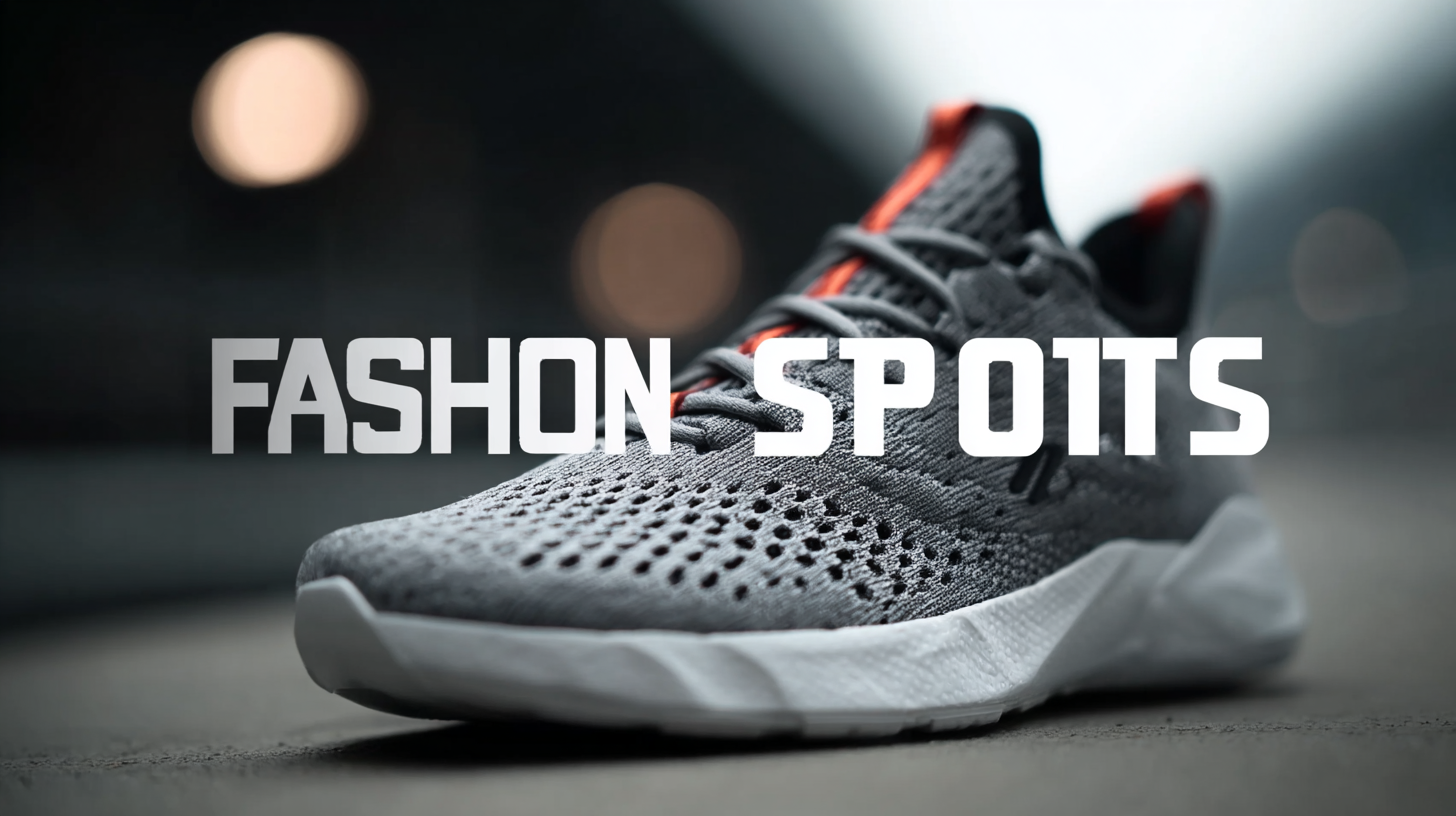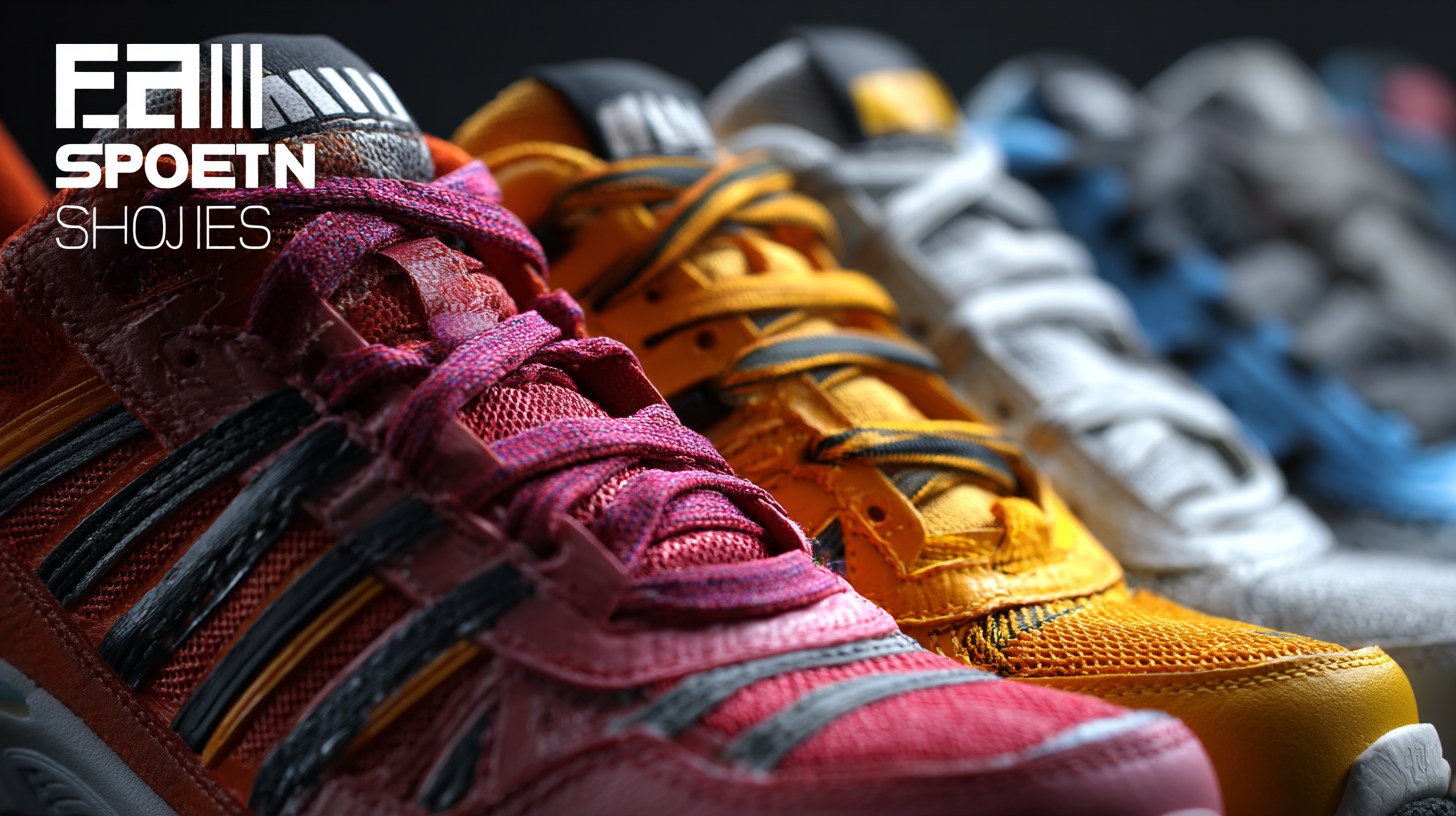
In today's competitive footwear market, the selection of high-quality Fashion Sports Shoes OEM is crucial for brands aiming to elevate their presence and drive growth. According to a report by Grand View Research, the global athletic footwear market size was valued at USD 64.31 billion in 2021 and is expected to expand at a compound annual growth rate (CAGR) of 6.5% from 2022 to 2030. This rapid growth highlights the increasing consumer demand for stylish yet functional sports footwear, providing a lucrative opportunity for brands that can offer compelling products. To capitalize on this trend, it is essential to understand the technical specifications of these shoes, including materials, durability, and performance features, ensuring that the selected OEM aligns with brand values and consumer expectations. In this blog, we will explore the key factors to consider when choosing the best Fashion Sports Shoes OEM for your brand's success.

Understanding the Importance of OEM Sports Shoes in Brand Growth Strategies
In today’s competitive market, Original Equipment Manufacturing (OEM) sports shoes play a pivotal role in the growth strategies of fashion brands. According to a report by Allied Market Research, the global athletic footwear market is projected to reach $200 billion by 2025, with a compound annual growth rate (CAGR) of 4.4%. This growth signifies an increasing consumer demand for innovative and stylish athletic wear, making it crucial for brands to consider OEM partnerships to streamline production and expand their product offerings efficiently.

OEM sports shoes allow brands to leverage expert craftsmanship and advanced technologies without incurring the high costs associated with setting up manufacturing facilities. By collaborating with established OEMs, brands can focus on design and marketing while benefiting from the manufacturers' experience and operational efficiencies. Additionally, a survey by MarketResearch.com highlighted that 65% of brands utilizing OEM services reported improved profit margins and faster time-to-market, underscoring the strategic advantage of incorporating OEM partnerships in brand development plans. Embracing OEM sports shoes not only enhances product quality but also enables brands to stay relevant and competitive in a rapidly evolving market.
In 2023, the global demand for fashion sports shoes continues to rise significantly, reflecting a dynamic shift in consumer preferences. The athletic footwear market was valued at approximately USD 46.6 billion in 2023 and is projected to expand to USD 75.5 billion by 2033, with a remarkable 4.9% compound annual growth rate (CAGR). This growth is driven by a growing emphasis on health and wellness, as consumers seek stylish yet functional footwear that complements an active lifestyle.
Furthermore, the smart shoes segment is also gaining momentum, with its market size expected to soar from USD 1.2 billion in 2025 to USD 7.5 billion by 2035, translating to a staggering CAGR of 23.1%. As technology integrates more deeply into our daily lives, smart footwear that offers features like fitness tracking and personalized comfort is becoming increasingly popular. Brands looking to capitalize on these trends must prioritize innovative design and functionality to align with consumer demands and promote brand growth in the evolving athletic footwear landscape.
When selecting the best fashion sports shoes OEM for your brand, the evaluation of quality and performance is paramount. Quality is not just a measure of durability, but also involves the materials used in the manufacturing process. Look for shoes made from breathable fabrics that promote ventilation while providing comfort and support. High-quality cushioning systems can enhance the wearer's experience, making it crucial to test various options to find the right balance between softness and responsiveness. Additionally, consider the shoe construction techniques, as those significantly affect longevity and aesthetic appeal.
Performance, on the other hand, encompasses the shoe's design and suitability for specific sports activities. Analyze aspects such as traction, flexibility, and stability in relation to the intended use of the shoe. A running shoe, for example, should offer excellent grip and shock absorption, while a basketball shoe requires enhanced ankle support and lateral stability. Collaborating with athletes or sports experts during the selection process can provide valuable insights into performance characteristics crucial for your target audience. To ensure your brand stands out, focus on creating a product that seamlessly marries style with functionality, prioritizing the needs of the athletes who will wear them.
When selecting the best fashion sports shoes OEM for brand growth, understanding consumer preferences is paramount. Recent studies show that the demographics influencing purchasing behavior are shifting, with Gen Z and Millennials increasingly prioritizing sustainability and social responsibility in their buying decisions. In fact, according to a report by Nielsen, 73% of Millennials are willing to pay more for sustainable offerings, indicating that brands must align their products with the values of their target audience to capture market share.
Additionally, the purchasing behavior of consumers is evolving, with online shopping becoming the dominant channel. Statista reports that e-commerce sales for sporting goods are expected to surpass $200 billion by 2025, highlighting the importance of having a robust online presence. Brands should focus on enhancing their online shopping experience and leveraging social media marketing to engage and convert the tech-savvy younger consumers. By aligning product offerings with the preferences of these demographics and investing in digital strategies, brands can foster loyalty and drive growth in a competitive market.

When it comes to selecting fashion sports shoes OEM for your brand, sustainability should be a key consideration. In today's eco-conscious market, consumers are increasingly leaning towards brands that demonstrate a commitment to sustainable practices. This not only enhances your brand's reputation but also attracts a loyal customer base that values environmental responsibility. Look for manufacturers that utilize eco-friendly materials and sustainable production methods, which can greatly reduce your brand's carbon footprint.
Tips for selecting sustainable fashion sports shoes include examining the material sources—opt for organic cotton, recycled plastics, or biodegradable fabrics. Moreover, consider manufacturers who practice fair labor policies and have transparent supply chains, as these factors contribute to ethical sustainability. Lastly, assess the lifecycle of the products; shoes designed for durability and recyclability will resonate well with environmentally conscious consumers and enhance your brand's visibility in the market.
Incorporating sustainability into your brand strategy allows for innovative marketing opportunities. Highlighting sustainable shoe features can set your brand apart from competitors, appealing to a niche yet growing segment of consumers. Social media platforms are perfect for sharing your sustainability journey, whether through behind-the-scenes looks at your production process or showcasing customer testimonials regarding the eco-friendliness of your products.
